First they came for the handbrake. Then they took the gearstick. Now they’ve grabbed the steering wheel.
In its place is a ‘yoke’ that might well have been shoplifted from an accessories bin for Nintendo consoles.
Cynics will dismiss it as a gimmick devised to steal some spotlight from the antics of Elon Musk. Yet their derision is undermined by one overwhelming feature: it works.
Lexus will introduce its new steer-by-wire technology to Irish drivers by the end of the year, featuring a butterfly-shaped ‘yoke’ in the higher-spec version of its updated RZ all-electric crossover.
RM Block
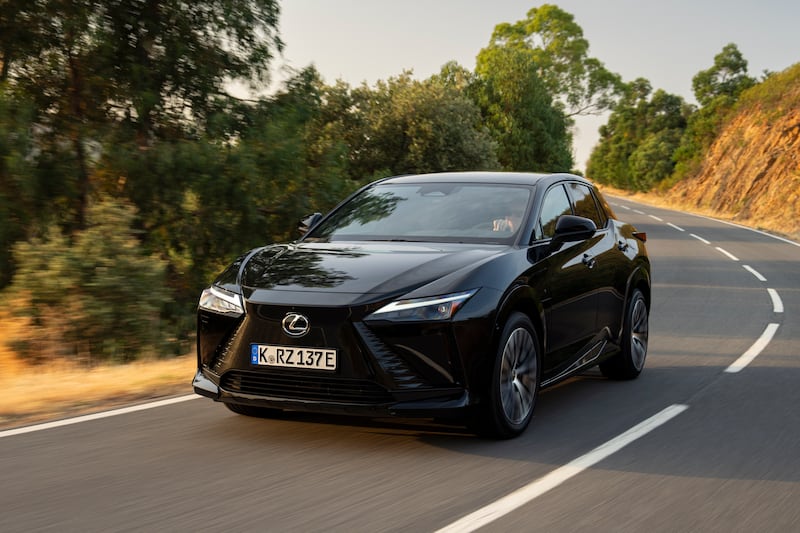
It’s a bold move from a brand that still considers itself a challenger in the premium car market. But it puts Lexus front and centre for early adopters hungry for the next tech leap and may help cut through the noise of endless automotive announcements and new brand arrivals.
Dubbed One Motion Grip, the system takes its cue from other transport sectors like aviation and marine by replacing the physical connection between the steering wheel and rack with electronic signals.
The ‘wheel’s’ movement is sensed by a Steering Torque Actuator and converted into mechanical action. Additional data on road surfaces is gathered from the tyres and fed to the control actuator to fine-tune responses. Vehicle speed is also factored in, enabling tight turns from lock to lock without crossing arms at low speeds.
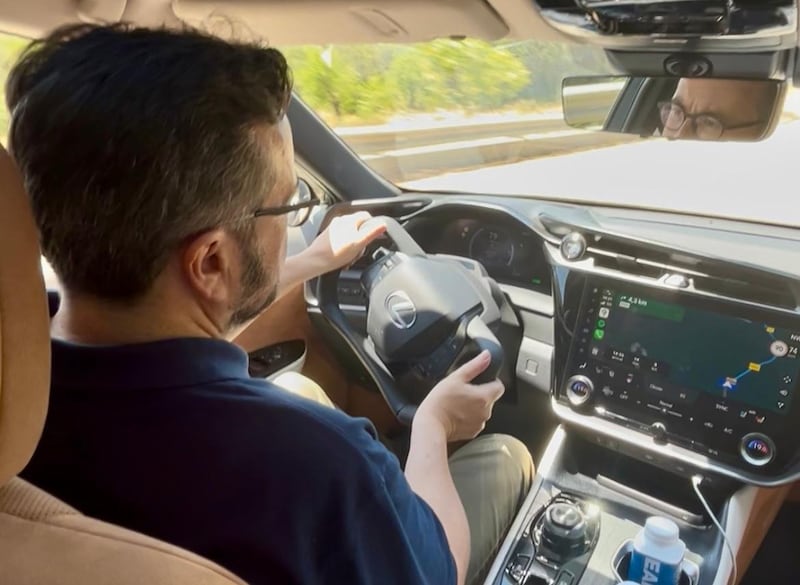
What all that means on the road is that you barely need to turn the wheel to round a bend or avoid an obstacle. It might seem radical, but it becomes intuitive after the first few bends.
In fact, it feels natural almost immediately, and surprisingly more precise and accurate than most conventional systems. Driving a standard version back-to-back with the One Motion Grip setup showcased the benefits of the new system.
So, what are they? There’s some weight saving from removing mechanical parts, though this is mostly offset by the need for back-up safety systems. According to RZ’s assistant chief engineer, Yasuyuki Terada, the real advantages are in the dynamic feedback to the driver, simpler production for left- or right-hand drive markets, and a potential leap forward for autonomous driving.
[ Dublin’s EV chargers row is pretentious, self-destructive nonsenseOpens in new window ]
That may be for the future, but even now, motorway runs and twisting back roads highlight the improved steering feel. After a few minutes, it feels second nature.
Terada says the system has taken 10 years to develop. The final tweak before launch increased full-lock steering from 150 degrees to 200, allowing tighter manoeuvres while still keeping hands in a 10-to-two position. This change makes it less abrupt in areas such as car parks.
Still, slow-speed turning takes getting used to. In tight spots, it’s easy to misjudge how close you are to full lock and risk clipping something. The increased steering arc helps, but Lexus dealers will need to stress this during handover and a few spins around the dealer car park would be strongly advised before the customer drives away.
Head of Lexus Ireland Ian Corbett says ensuring buyers understand the system is a priority. He expects about 20 per cent of RZ sales next year to feature One Motion Grip.
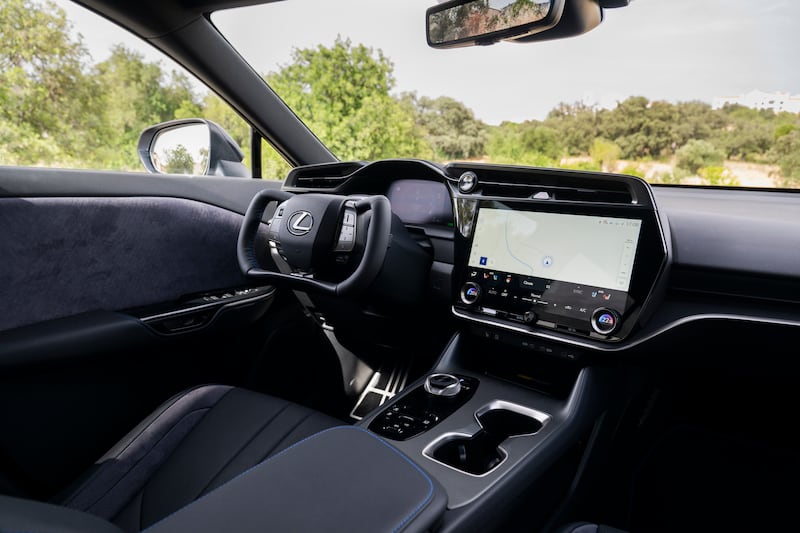
The new system is standard on the upcoming RZ500, which also includes all-wheel drive and Lexus’s VDIM – a dynamic stability programme that can anticipate loss of traction and intervene with steering, braking and stability control.
For those not ready to ditch the wheel, the front-wheel-drive RZ350 uses a conventional setup, but lacks the RZ500’s VDIM.
[ Car makers sound alarm as China turns off tap on mineral suppliesOpens in new window ]
Both models get a new 77kWh lithium-ion battery and a more powerful 22kW AC charger, which can recharge from empty to full in 3½ hours with the right supply, or from 10 to 80 per cent in about 30 minutes via a 150kW DC charger.
The RZ500 produces 380hp (280kW), while the RZ350 delivers 224hp (165kW). That extra power allows the RZ500 to tow braked trailers of up to 1,500kg – double the previous capacity.
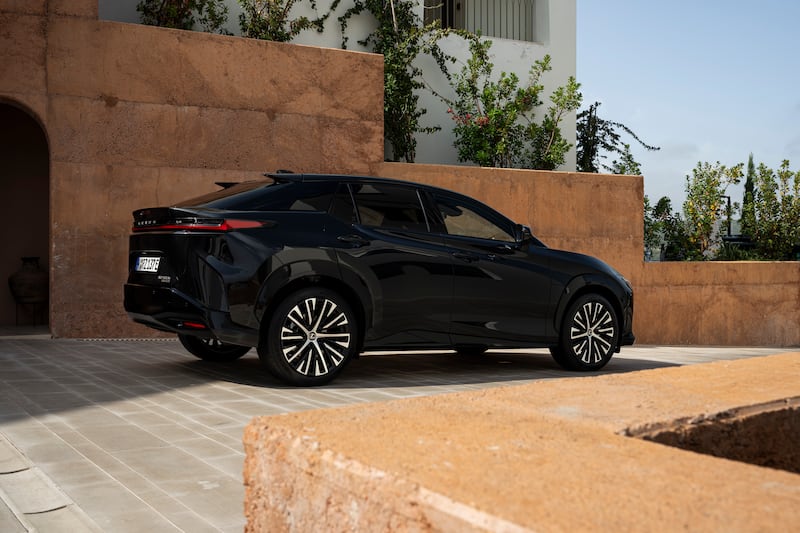
Range? Lexus claims the RZ350e will do 568km on a full charge, with the RZ500 offering 456km.
What’s it like to drive? Both versions are smooth and quiet, but neither really packs a punch. Lexus will offer a 550F Sport version in some markets, but it’s not coming to Ireland. The variants we get are packed with torque – as we’ve come to expect from electric cars – but the preference for smooth rather than sporty characteristics softens the RZ’s edge.
If you like to hurtle towards the horizon while your passengers hurl into sickbags, then the RZ is not for you.
Lexus has worked to keep the cabin stable, whatever the road conditions or driving style. Extra soundproofing helps keep things calm inside the plush cabin.
It’s a standout interior too. Lexus is going toe-to-toe with Audi on cabin quality. The range-topping RZ500 still has a few hard plastics, but overall finish is now on a par with other premium brands. Boot space and rear legroom are generous too.
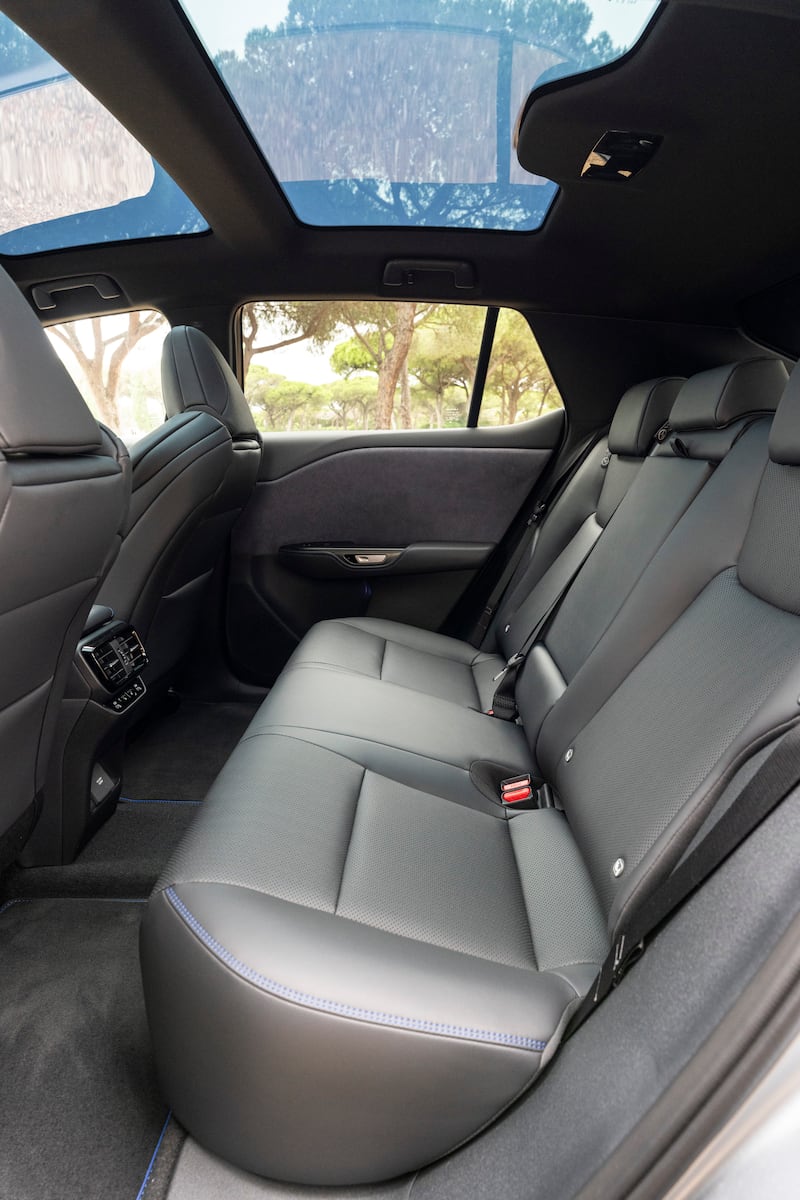
All told, the RZ is an impressive package – with or without One Motion Grip. While pricing isn’t confirmed, it’s expected to start around €70,000 when it arrives later this year.
That will put it on the shopping list for many new car buyers who have witnessed soaring prices across all market segments in the last five years.
Lexus may still be chasing the German giants, but Irish sales are up nearly 40 per cent this year, with two new dealers added in the past two years.
With sleek styling, a plush cabin and that radical new steering system, the RZ might just turn more heads than expected in 2025.
Is One Motion Grip more than a gimmick? Yes, and it’s likely to herald the future of steering.




















